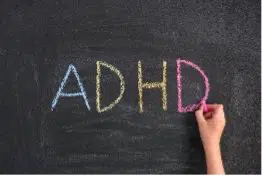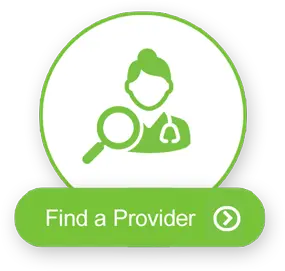When your child is diagnosed with attention deficit hyperactivity disorder (ADHD), it can feel overwhelming. In some ways, it’s a relief – after all, you now may have a better understanding for behaviors you’ve been noticing in your child, and new hope for treatment.
At the same time, you likely have questions. With a variety of medications, therapies, and resources available today, where do you even begin?
Understanding your child’s ADHD diagnosis
First, know you’re not alone. Millions of children in the U.S. have been diagnosed with ADHD, according to the Centers for Disease Control and Prevention (CDC). Your child likely isn’t the only one at school who needs help with their attention span, hyperactivity, or impulsive behavior.
With the diagnosis, you can feel reassured knowing your child’s ADHD symptoms aren’t their fault, or yours.
“It is important to note that ADHD is not caused by poor parenting,” says pediatrician Cindy Gellner, M.D., in the University of Utah Health podcast The Scope. “Current theories suggest that ADHD is probably due to small differences in brain chemistry and function.”
Once your child has been diagnosed, an important next step is to learn what you can about ADHD and available services. Choosing a treatment or treatments for a child with ADHD will depend on his or her age and specific needs.
According to the CDC, for children ages four to six years, the first line of treatment should include:
- “Parent training in behavior management; and/or behavioral classroom interventions (if available).
- Methylphenidate may be used if behavioral interventions do not provide significant improvement and the child continues to have serious problems.”
For children aged six to 18 years, the CDC advises treatment to include “FDA-approved medications along with parent training in behavior management and/or behavioral classroom interventions.”
The CDC notes that treatments often work best when used together.
Learning more about ADHD medication
“Stimulants are the most common type of medication used to treat ADHD. Research shows these medications can be highly effective. Like all medications, they can have side effects and require an individual’s healthcare provider to monitor how they may be reacting to the medication,” according to the National Institute of Mental Health (NIMH) website.
Non-stimulant medications may also be prescribed by clinicians. The NIMH notes that sometimes a child may try several different medications or dosages before finding something that helps manage their ADHD symptoms without problematic side effects.
A pharmacogenomic test, like the GeneSight® test, can help inform a healthcare provider about how your child’s genes may impact how they metabolize or respond to certain medications commonly used to treat depression anxiety, ADHD, and other mental health conditions. The test must be ordered by a clinician who can prescribe medications. The results of the GeneSight test are intended to supplement other clinical factors considered by a clinician during a comprehensive medical assessment.
“In the early months of ADHD medication treatment, a provider needs to see the child about once a month… This is to ensure that the medicine is working properly and not causing any major side effects,” according to pediatrician Ricardo Baler, M.D., in a UNC Health Talk article. “Typically, patients start at a low dose and then their doctor re-evaluates at their monthly check-ins… Once patients are doing well, provided that their doctors have no further concerns, follow-ups can be limited to every three to six months.”
Talking to your child’s school about ADHD
In addition to medication, recommended ADHD therapies often involve tweaks to your child’s routines at home and at school. Dr. Baler says it’s important to talk to your child’s teachers and form a team. Some children with ADHD will need an individualized education plan (IEP), but even if one isn’t needed, other adjustments can be made during your child’s school day.
“The school needs to know,” Dr. Baler says. “They can help him to be more organized, allow him to sit closer to the teacher or give more time to finish a test.”
The CDC notes that in the school environment, both behavioral classroom management techniques (which encourage positive behaviors and discourage negative behaviors through use of a reward system or daily report card) and organizational training plans (which help teach time management, planning skills, and organization) have been shownto be effective for ADHD students.
Creating an ADHD-friendly home

Here are a few of the tips the CDC recommends to parents:
- Create an everyday routine that includes a consistent wake time and bedtime.
- Consistently keep your child’s backpack, entertainment, and clothes organized – and in the same place each time.
- Determine how they can best concentrate when working on homework – some children need distractions like TVs turned off, while others need to be moving or listening to light music to help them focus.
- Reduce excessive choices when it comes to toys, clothes, and food.
- Support a healthy lifestyle including wholesome foods and enough physical activity and sleep.
- Use discipline methods such as time-outs or removal of privileges rather than scolding or yelling.
- Use clear and brief directions when your child needs to do something.
CDC suggests encouraging your child to participate in something they do well – such as a school subject, sport, art, or music – to help create more positive experiences and feelings of success. You can use goal setting for positive behaviors, so your child can see steps they are taking in the right direction.
“At home, a few great tips include starting a behavior chart or technique such as a button/stone jar for ‘catching good behavior,’ and using frequent breaks during homework time, with lots of opportunity for physical/outside play,” says Jennifer Katzenstein, Ph.D. and co-director for the Center for Behavioral Health at Johns Hopkins All Children’s Hospital, in an On Call for All Kids interview.
Dr. Katzenstein says to “keep expectations consistent and give lots of positive reinforcement and praise.”
Staying on top of symptoms of ADHD
Understanding your child’s ADHD diagnosis and helping them navigate treatment means you’ve already taken an important step – showing your care and support. While your child’s ADHD might not entirely “go away,” the work you’re doing will help them learn attention, behavior and skills that put them on the right path for success now and later in life.
As the months pass, if your child has been prescribed medication, continue to help them take their medication as directed and monitor their mental health. Keep in mind that your child’s treatment plan may need adjustments as they continue to develop.
It’s also important to keep up the team effort you’ve begun with your child’s healthcare providers and teachers. A diagnosis of ADHD may require a lot of learning at first, but these professionals will be by your side along the way. Together, you can make a difference.
“The future is bright!” says Dr. Katzenstein. “We know there are great treatments for ADHD, and amazing personality characteristics, creativity and social skills that accompany ADHD as well. We want to make sure all kids get everything they need to be successful.”
If you’d like to learn more about ADHD, please read: https://genesight.com/blog/patient/do-i-have-adhd/.
If you are interested in learning more about the GeneSight test, please visit: https://genesight.com/product/psychotropic-report-details/
Our articles are for informational purposes only and are reviewed by our Medical Information team, which includes PharmDs, MDs, and PhDs. Do not make any changes to your current medications or dosing without consulting your healthcare provider.
The GeneSight test must be ordered by and used only in consultation with a healthcare provider who can prescribe medications. As with all genetic tests, the GeneSight test results have limitations and do not constitute medical advice. The test results are designed to be just one part of a larger, complete patient assessment, which would include proper diagnosis and consideration of your medical history, other medications you may be taking, your family history, and other factors.
If you are a healthcare provider and interested in learning more about the GeneSight test, please contact us at 855.891.9415. If you are a patient, please talk with your doctor to see if the GeneSight test may be helpful.








